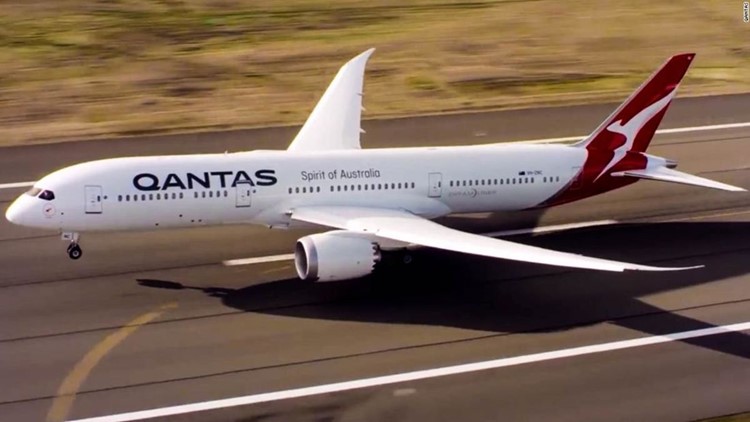Until someone invents a device to teleport humans from one side of the Earth to the other, this is the next best thing.
An experimental research flight operated by Australian airline Qantas touched down in Sydney on Friday, after flying nonstop from London — a journey that pushes the frontier of modern aircraft capabilities — smashing two aviation records and witnessing a rare double sunrise along the way.
Flight QF7879 became the world’s longest passenger flight by a commercial airline both for distance, at 17,800 kilometers (about 11,060 miles), and for duration in the air, at 19 hours and 19 minutes.
The achievement could help usher in a new generation of so-called ultra long haul flights that will directly connect far-flung Sydney with destinations across Europe and the United States.
The 50 or so people onboard departed London’s Heathrow on Thursday in the pitch dark of pre-dawn, having sucked down their last lungfuls of rain-drenched November air.
Two sunrises later, they emerged blinking into a bright, warm Friday afternoon on the east coast of Australia. At least three whole hours sooner than if they’d had to change aircraft en route.
It’s not a service fare paying passengers can buy tickets for yet. Qantas hopes to make it part of its regular schedule by 2022 or 2023, but before that happens it’s got to convince Australian aviation regulators that pilots, cabin crew and passengers can cope with up to 22 hours in the air without a break.
The airline calls its plan, which also includes regular New York-Sydney flights, “Project Sunrise.” The airline’s chief exec, Alan Joyce, describes it as the “last frontier” of commercial flying.
Flight QF7879 from London is one of three research trips being undertaken by the airline to gather data to present to Australia’s Civil Aviation Safety Authority. During these flights, pilots wear brainwave monitors and have their urine tested in the weeks before and after the flight to track levels of melatonin, a hormone that controls sleep cycles.
Other passengers, mainly Qantas employees and frequent fliers, wear biometric monitors during the flights to record sleep patterns, physical activity and even inflight entertainment consumption.
Also on board the factory-fresh 787-9 Dreamliner were a handful of journalists, CNN included. Qantas has shrewdly used the test flights as headline-generating publicity ops.
The plane’s landing in Sydney was timed to coincide with the eve of Qantas’s 99th anniversary and hundreds of employees turned out to greet it at a specially organized celebration.
CEO Joyce says a decision on whether it’ll go ahead with the “Sunrise” flights will be made at the end of the year. That’ll depend on the regulators and getting the right aircraft to make it economically viable — currently Boeing’s 777X-9 and Airbus’s A350-1000 are both in the frame.
It’ll also depend on whether customers are willing to endure the full nonstop journey.
If they are, flight QF7879 should give them a taster of what to expect.



